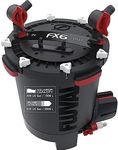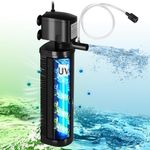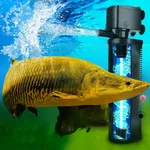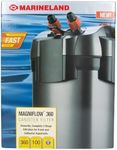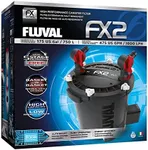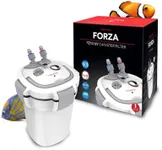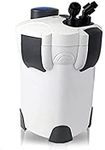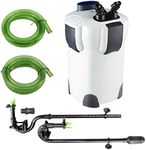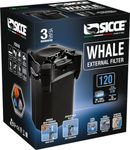Buying Guide for the Best Canister Filter For Saltwater Tank
Choosing the right canister filter for your saltwater tank is crucial for maintaining a healthy and thriving aquatic environment. A canister filter helps to keep the water clean by removing debris, waste, and harmful chemicals. When selecting a canister filter, it's important to consider several key specifications to ensure it meets the needs of your specific tank setup. Understanding these specifications will help you make an informed decision and provide the best care for your marine life.Flow RateFlow rate refers to the amount of water the filter can process in a given time, usually measured in gallons per hour (GPH). This is important because it determines how effectively the filter can clean the water. For saltwater tanks, a higher flow rate is generally better as it ensures more water is being filtered. Small tanks (up to 30 gallons) may need a flow rate of 100-200 GPH, medium tanks (30-75 gallons) might require 200-400 GPH, and large tanks (over 75 gallons) could need 400+ GPH. Choose a flow rate that matches the size of your tank and the bioload (amount of fish and other organisms) to maintain optimal water quality.
Filtration StagesFiltration stages refer to the different types of media used within the canister filter to clean the water. These typically include mechanical, chemical, and biological filtration. Mechanical filtration removes physical debris, chemical filtration removes dissolved impurities, and biological filtration supports beneficial bacteria that break down waste. A good canister filter should have all three stages. For a saltwater tank, it's essential to have robust biological filtration to handle the higher bioload. Ensure the filter you choose has adequate space for all three types of media and can be easily maintained.
Media CapacityMedia capacity is the amount of space available within the filter for different types of filtration media. This is important because a larger media capacity allows for more effective filtration and longer intervals between maintenance. For smaller tanks, a moderate media capacity may suffice, but larger tanks will benefit from a higher media capacity to handle the increased volume of water and waste. Consider the size of your tank and the types of media you plan to use when evaluating media capacity.
Ease of MaintenanceEase of maintenance refers to how simple it is to clean and replace the filter media. This is important because regular maintenance is crucial for the filter's performance and the health of your tank. Look for filters with user-friendly designs, such as easy-to-remove media baskets and quick-release valves. If you have a busy schedule or prefer low-maintenance equipment, choose a filter that is known for its ease of maintenance to ensure you can keep up with the necessary upkeep.
Noise LevelNoise level refers to how much sound the filter produces while operating. This is important for maintaining a peaceful environment, especially if the tank is located in a living area or bedroom. Canister filters are generally quieter than other types of filters, but noise levels can still vary. If noise is a concern for you, look for models that are specifically designed to operate quietly. Reading user reviews can also provide insight into the actual noise levels experienced by other users.
Durability and Build QualityDurability and build quality refer to how well the filter is constructed and how long it is likely to last. This is important because a well-built filter will provide reliable performance and require fewer replacements. Look for filters made from high-quality materials and with a solid construction. Checking reviews and brand reputation can also give you an idea of the filter's durability. If you want a long-lasting filter, prioritize models known for their robust build quality.
